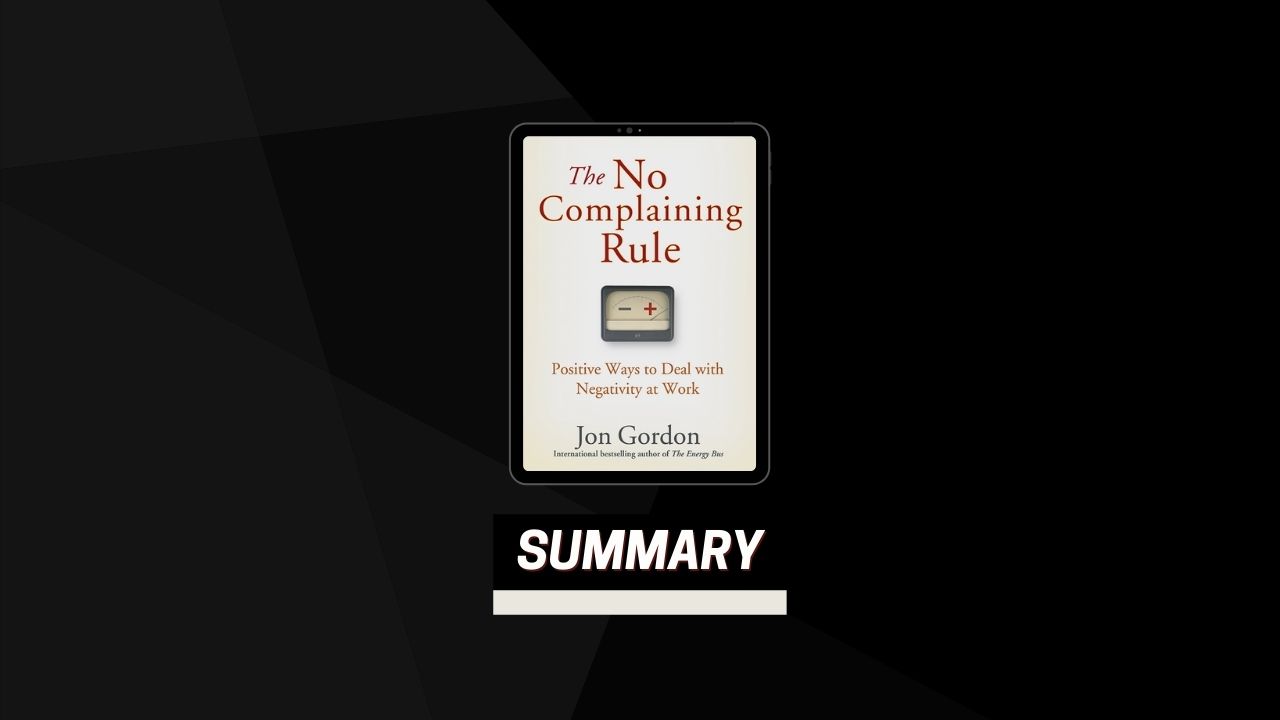Kindle | Hardcover | Audiobook
Cost of Negativity
Negativity costs the U.S. economy between $250 to $300 billion every year in lost productivity, according to the Gallup Organization. And this number is conservative since it doesn’t take into account the ripple effect of complaining and negativity. And Ninety percent of doctor visits are stress related, according to the Centers for Disease Control and Prevention, and the #1 cause of office stress is coworkers and their complaining.
Negative emotions are associated with the following:
- Decreased life span and longevity
- Increased risk of heart attack
- Increased risk of stroke
- Greater stress
- Less energy
- More pain
- Fewer friends
- Less success
You need to know your competition, and once you know them you can exploit their weakness. Negativity has a weakness. Let’s find a way to exploit and conquer it, and we’ll be well on our way to a successful turnaround.
A Positive Environment and Culture Are Everything
Positivity doesn’t happen by osmosis. It happens by relentlessly focusing on our culture and weeding out negativity.
You see, the best way to deal with negativity is to create a positive culture where negativity can’t breed, grow, and survive. Otherwise, you will spend all your time fighting negativity rather than cultivating a positive culture.
Positive Leadership Is Required
We need positive leadership to build a positive culture. It must be a priority.
Positive energy flows from the top down in our organization. It trickles up and moves sideways, but it flows from the top down. Positive leadership is essential.
The Secret to Winning
When it comes to building a successful company, there is no debate between nature or nurture. It’s all about nurture. We must relentlessly make our culture and people a priority at all levels of our organization. It’s like the root and fruit of a tree. The root, which is our culture, people, and spirit must be our focus. Instead of focusing so much on the fruit—profits, stock price, and numbers—let’s relentlessly nurture our root. If we do this, we will be very pleased with our fruit
Of course we have to look at numbers. But it shouldn’t be our focus. Because people deliver the numbers, people should be our focus, and if we focus on them they will deliver the numbers we want.
Trust Must Permeate the Organization
The number one thing our employees and customers want to know is Can I trust you, and do you care about me?
Or simply say what you are going to do and do what you say. If you lead with truth, success will follow. And to spread trust and positive energy throughout the organization we must communicate, communicate, communicate. Which leads us to the next principle.
Fill the Void with Positive Communication
Positive communication and positive interactions can’t just happen by chance.
As leaders, we need to do a better job of listening to our people and empowering them to create solutions. We need to praise them more instead of always demoralizing them. The key is the power of positive interactions. In fact, John Gottman’s pioneering research found that marriages are much more likely to succeed when the couple experiences a 5:1 ratio of positive to negative interactions; whereas, when the ratio approaches 1:1, marriages are more likely to end in divorce. Additional research also shows that work groups with positive to negative interaction ratios greater than 3:1 are significantly more productive than teams that do not reach this ratio.
Become Solution and Innovation Focused
With a positive culture that fosters positive communication, we can then use our communication network to become solution and innovation focused. We can listen to our employees and encourage them to share their ideas with us. This includes their complaints. If we listen to them and collect their ideas, we will become a company that harnesses the power of its people. We will turn great ideas into successful innovations, and we will turn problems and complaints into solutions.
No Complaining Rule Action Plan
Use this plan to introduce, explain, and implement the No Complaining Rule and empower your team to turn problems into positive solutions. It’s a practical and powerful approach for businesses, organizations, schools, churches, sports teams, and even families.
Step 1: Explain the Cost of Negativity and Complaining
Gather your team or organization in person or on the phone and explain the cost of personal and organizational negativity. Use the research and statistics and clearly identify the problem and the effect it has on productivity, performance, and success.
Step 2: Share and Explain the No Complaining Rule
People are not allowed to mindlessly complain to their coworkers and/or team members. If they have a problem or complaint about their job, their organization, their customers, or anything else, they are encouraged to bring the issue to their manager or someone who is in a position to address the complaint. However, the employee or team member must also have thought of one or two possible solutions to the complaint and share that as well.
Step 3: Justified Complaining versus Mindless Complaining
Discuss the difference between mindless complaining and justified complaining. Explain that mindless complaining focuses on problems whereas justified complaining focuses on solutions.
Step 4: Identify and Share Your Complaint/Solution Process
It is essential that each person in your organization understands how your organization and team will consider and address complaints and turn problems into solutions. There are many possible options, and you simply must decide what works best for your type of organization. Following are some ideas to consider. You may use one or a combination of all of these ideas, depending on the size of your organization, the culture, the type of organization, and other factors.
- Direct Report. Many organizations will have their people bring their complaints and solutions to their manager or boss, and they work together to solve the problem.
- Complaint Czar. Smaller organizations or divisions may elect to have one person handle complaints and solutions and work with managers and/or team members to implement their ideas.
- Executive Team. Complaints that center around organizational issues will be brought to the executive team where problems will be considered and solutions will be implemented quarterly.
- Complaint Terminator. Organizations may use technology and an intranet site where employees can post their complaints and solutions.
- The Good Ole Shoe Box. Smaller organizations or divisions may elect to have their people write their complaints and solutions on a piece of paper and collect them in a “solution box” “idea box,” or “innovation box.”
Step 5: Listen, Hear, and Act
For the No Complaining process to work effectively, your people need to know that their complaints and solutions will be heard and considered. Their solutions don’t necessarily have to be acted upon, but they will want to know that their ideas were considered. It is essential then that your organization address complaints, consider solutions, and act accordingly.
Step 6: Celebrate Successes
To reinforce the No Complaining Rule and generate a solution-focused culture in your organization, you’ll want to celebrate and spotlight the successes of people who turned their complaints into solutions and innovations that benefited the organization. Recognize them and share their success stories with the entire organization. Shine a light on people and the process, and this will encourage more success stories. Don’t wait for an annual meeting to do this. Do this continuously throughout the year via e-mail, web site postings, conference calls, and meetings.
Step 7: Monitor and Enforce the No Complaining Rule
Encourage leaders, managers, and everyone in your organization to enforce the No Complaining Rule. Make creating a positive culture everyone’s priority. Encourage everyone to weed out negativity when they see it and hear it. Make mindless complaining a cultural taboo in your organization. Ingrain positive energy into the culture and habits of your people.



